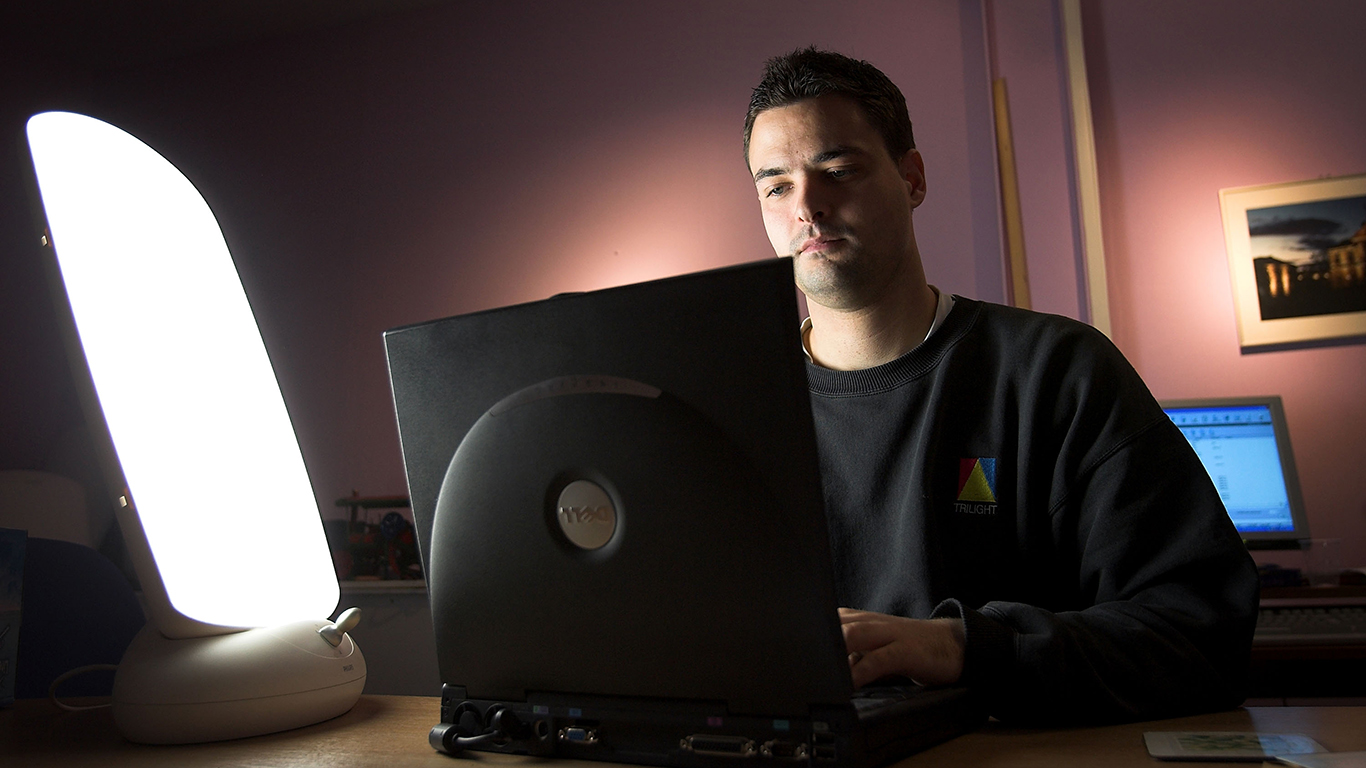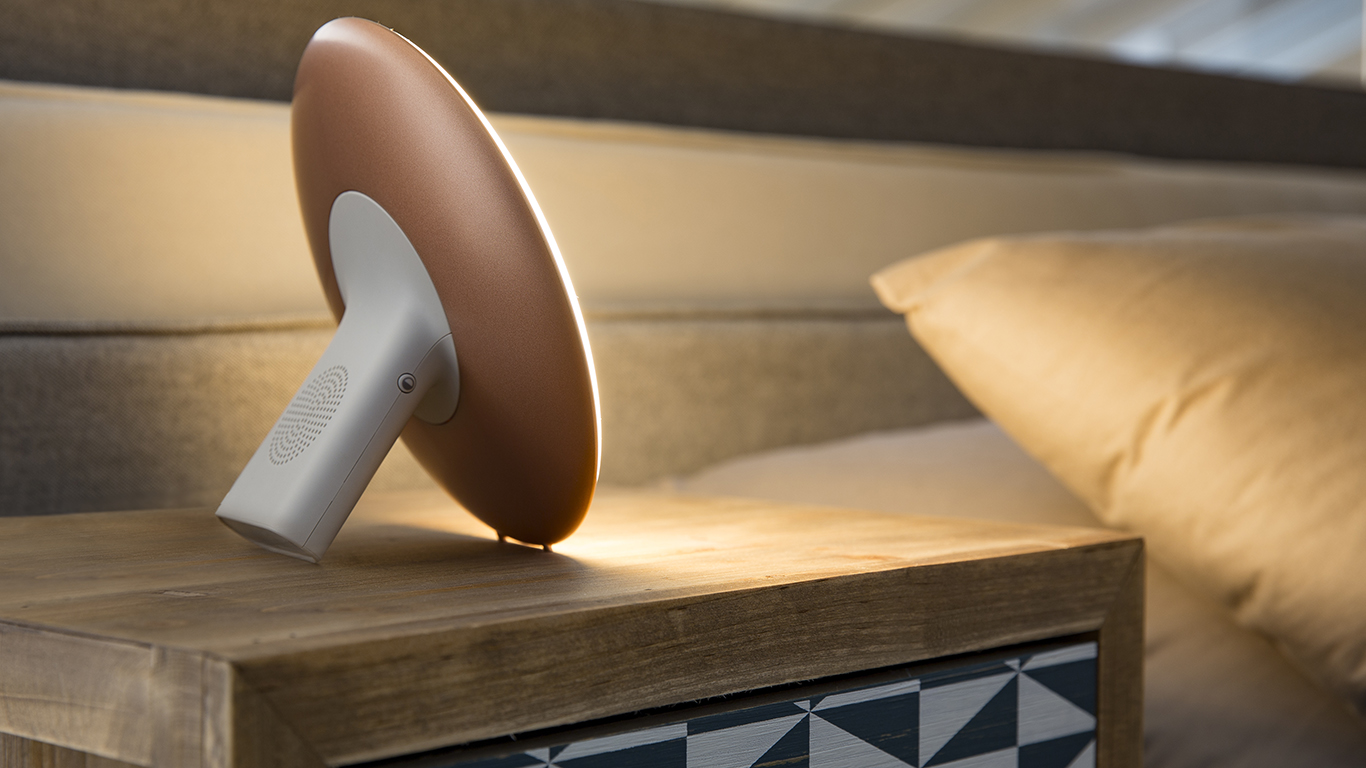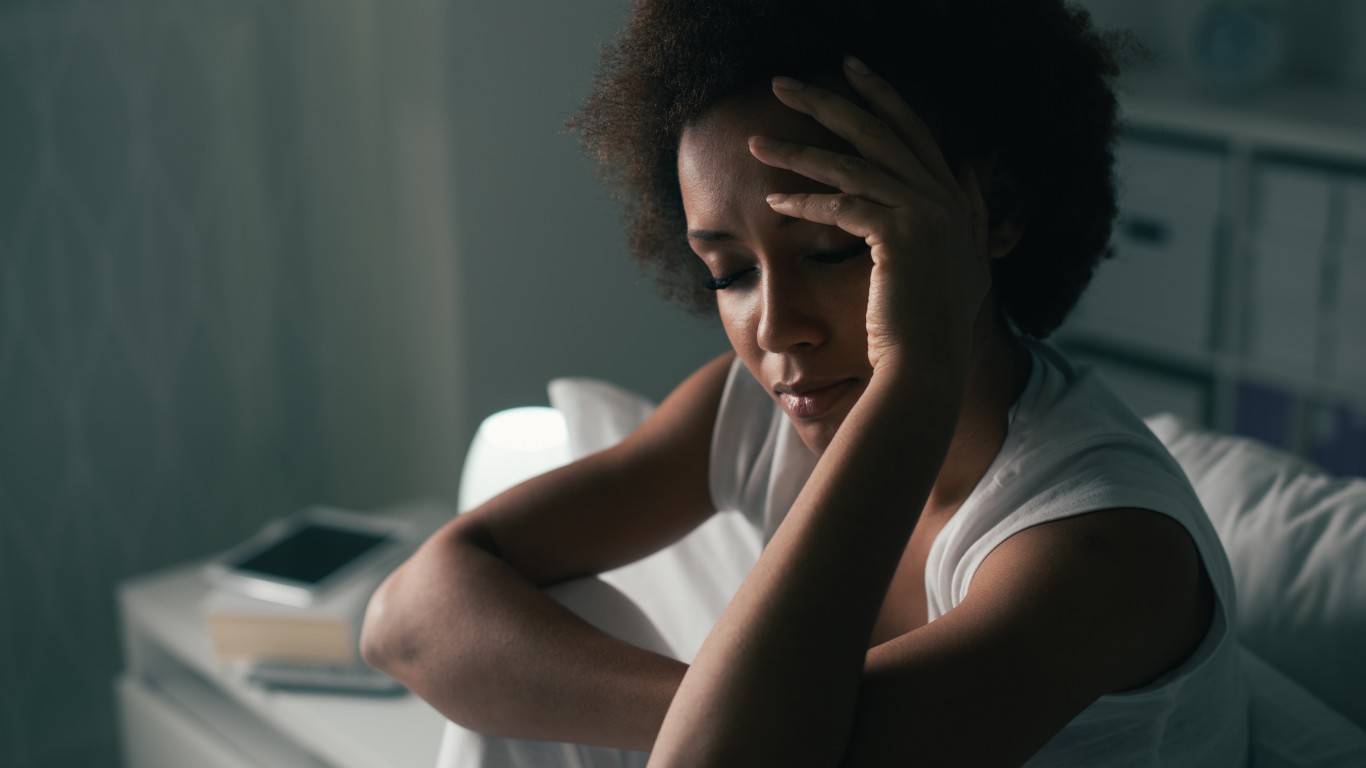
This post may contain links from our sponsors and affiliates, and Flywheel Publishing may receive
compensation for actions taken through them.
Seasonal affective disorder (SAD) has several nicknames — winter depression, winter blues, and seasonal depression. It is a type of mood disorder that many people experience in the winter and typically goes away in the spring and summer.
About 6% of Americans, primarily those living in northern climates, experience SAD. Another 14% of adults suffer from the slightly milder form of seasonal depression — winter blues. Symptoms of SAD include weight gain, craving sweets and carbs, lack of energy, problems focusing, social withdrawal, fatigue, and a tendency to oversleep.
Doctors are not certain what causes seasonal depression, but several theories exist. One has to do with lack of sunlight. Less light means lower levels of Vitamin D, which is important for the production of serotonin, which controls many brain functions and behaviors. Another explanation has to do with melatonin, also known as the sleep hormone. Shorter days in the winter mean longer periods of darkness, which increases melatonin production, leaving people feeling more lethargic and tired.
A third theory has to do with people’s ability to regulate serotonin. Patients with SAD have 5% more serotonin transporter protein in winter months. This means there is less serotonin available because the function of the transporter is to recycle serotonin back into the presynaptic neuron, a nerve cell that releases neurotransmitters.
To identify ways to combat seasonal affective disorder, 24/7 Tempo reviewed dozens of studies about the condition, its effects on mental health, and potential treatments.
Click here to read about 13 ways to fight SAD without medication.

1. Get a light box
Light therapy is an effective method to treat seasonal affective disorder if it’s administered every day for several weeks in a row, research shows. Depressed patients who were not receiving any treatment used a light box in the winter. They showed significant improvement in mood, especially when exposed to white light for 40 minutes a day. Light boxes work because bright light stimulates the retina, which has cells connected to the hypothalamus, which is important for regulating one’s circadian rhythm. Stimulating the hypothalamus helps restore a normal circadian rhythm, alleviating SAD symptoms.
[in-text-ad]

2. Invest in a dawn simulator
A dawn simulator makes lights and alarm clocks turn on over a set period of time. Studies have shown that dawn simulation, that resembles natural light, and high-density negative air ionization are effective antidepressant methods that can be considered instead of medication. Separate research has also found that dawn simulation reduces the severity of depression symptoms. An experiment comparing bright light therapy and dawn simulation found both methods to be almost equally effective, but more people slightly preferred the former.

3. Eat the right foods
Food doesn’t only give you energy, it also affects your mood. Foods that are rich in trans fats, such as candy and cookies, provide a very short relief. They can damage your your mood and your physical health in the long run. Trans-fatty acids mess with cell membranes, causing an adverse effect on the brain. Fish, Brazil nuts, dark chocolate and berries are good choices to boost your mood. As a general rule, you want to eat healthy foods that are rich in color, because that indicates they are also rich in vitamins, minerals and antioxidants that “feed” the brain and protect it from oxidative stress.

4. Go for walks and exercise
Running and other aerobic activity are known to release “feel-good” endorphins, which are chemicals in the brain that help regulate mood. Exercise has been linked to significant reductions in depression severity. The increased rate of oxygen consumption is one possible explanation. Exercising outdoors is even better because you get the extra benefit of natural light. Research has shown exercise to be an effective treatment for depression, improving symptoms as much as pills or psychotherapy. Even moderately active people are less likely to be depressed. There is also some evidence that strength training may be effective.
[in-text-ad-2]

5. Listen to a lot of upbeat music
Studies have shown that music therapy helps with seasonal affective disorder symptoms in elderly patients. People can become happier when listening to cheery music, but they have to make an effort. Participants who listened to music while actively trying to feel better reported higher levels of happiness after two weeks, compared to those who just listened to music.

6. Be a volunteer
Volunteering makes people happy, studies have found. It is significantly predictive of life satisfaction, self-esteem, and lower depressive symptoms and psychological distress. Separate research suggests that volunteering can also help you live longer. The social interactions that come with it lower mortality risk by four years. The motive, however, is crucial. People who volunteered for selfish reasons still had a similar mortality risk as non-volunteers.
[in-text-ad]

7. Start a new hobby
All forms of depression can make people feel uninterested in anything. Activities they used to enjoy are no longer fun. It may be time to take up a new hobby then, preferably a winter hobby, according to Johns Hopkins Medicine. One example is a new do-it-yourself project around the house. People value their time more than money as they get older, research shows, as long as that time is spent on hobbies, working out, or being with family.

8. Start planning a trip
The mere anticipation of a vacation boosts a person’s mood. People going on a trip reported a higher degree of pre-trip happiness compared to non-vacationers, according to research. Where you go, however, matters. The study also found that only a very relaxed trip improves vacationers’ happiness after they return. For extra motivation, plan a trip to a sunny location. Separate research shows that people feel more gratitude for things they do, including a trip to a new place, than for things they own.

9. Spend time outdoors
Just a week of one-hour morning walks outside makes a big difference, research has found. Levels of cortisol, also called the stress hormone, decreased. Exposure to natural light is key to dealing with depression in general. A separate study has shown that lack of natural light at work offices is linked to depressive symptoms, high levels of cortisol, and lower levels of melatonin, which plays a role in sleep and mood, at night.
[in-text-ad-2]

10. Socialize
Talking with others can help fight depression and guard against it, but it has to be in person; phones and social media won’t do it, according to research. There are unmatched mental health benefits from regular face-to-face social interactions among older adults. People who regularly met with family and friends were less likely to report symptoms of depression. The gains derived from face-to-face mingling lasted for years. A separate study has also found that increased social interaction helps people with depression rebuild their self-esteem, which leads to developing positive relationships with others.

11. Stay warm
Do people who are cold feel happy? Most probably don’t. Serotonin, also called the happy hormone, has clear seasonal links, and levels are lower in the winter months. Warming the skin may activate serotonin nuclei that produce an antidepressant effect, according to research. Separately, a study of the population of Iran found that common depression was more prevalent where there was more cold and rainy weather.
[in-text-ad]

12. Go to talk therapy
Cognitive-behavioral therapy (CBT), or talk therapy, can have a tremendous impact in dealing with SAD. CBT, light therapy and combination treatment all improved depression in the winter, according to research. A year later, patients who only had CBT as treatment had better outcomes than those who had been treated with light therapy alone. With CBT, people are taught how to fight negative thoughts and avoid harmful behaviors such as social withdrawal.

13. Manage stress more effectively
How people manage stress varies from one person to another. However, finding a way to handle stress and anxiety — whether it’s through meditation, deep breathing, running, or talking to people — is crucial. A medical review of people suffering from depression showed that most cases were clearly induced by psychosocial stress, either at work or at home. Chronic stress leads to higher cortisol but lower serotonin and dopamine levels, all of which are linked to depression.
The Average American Is Losing Their Savings Every Day (Sponsor)
If you’re like many Americans and keep your money ‘safe’ in a checking or savings account, think again. The average yield on a savings account is a paltry .4% today, and inflation is much higher. Checking accounts are even worse.
Every day you don’t move to a high-yield savings account that beats inflation, you lose more and more value.
But there is good news. To win qualified customers, some accounts are paying 9-10x this national average. That’s an incredible way to keep your money safe, and get paid at the same time. Our top pick for high yield savings accounts includes other one time cash bonuses, and is FDIC insured.
Click here to see how much more you could be earning on your savings today. It takes just a few minutes and your money could be working for you.
Thank you for reading! Have some feedback for us?
Contact the 24/7 Wall St. editorial team.
 24/7 Wall St.
24/7 Wall St.
